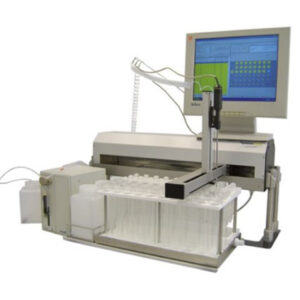
Consultation
Consultation – Do you need further information?
Then please contact us by e-mail or telephone!
The AQF-2100 is an digestion system for coupling to ion chromatography (combustion IC). Determination of fluorine, chlorine, bromine, iodine and sulphur in solid, liquid and gaseous samples with organicand/or inorganic matrix or k omponents. Decoupled digestion systems are available.
The AQF-2100 is a high-temperature digestion system that can be coupled with an ion chromatograph. The resulting system is called a combustion IC. With this coupled analysis system, halogens and sulfur can be determined in liquid, viscous, solid and gaseous samples. Classically, personnel-intensive methods such as Wickbold, Schöninger or Druckbombe are used for such investigations. In addition to the possibility of complete automation for liquid and solid samples, the AQF-2100 offers significantly lower detection limits than most classical methods with better reproducibility of the results.
For more than 20 years, the combination of combustion arrest and ion chromatography as a combustionIC has offered the possibility of fully automatic halogen and sulfur analysis in almost every matrix from inorganic solids to gases. The combustion-IC stands not only for the successful coupling of two established analytical methods,butalso for our successful cooperation with specialists for ion chromatography. We ourselves have more than 40 years of experience with combustion analyzers and have been operating c-IC systems in our laboratory for almost 20 years.
The AQF-2100 sets standards in automation, flexibility and applicationbandriding. With shorter measuring times, extensive measurement sequences and low maintenance, we provide you with the all-round package for robust and cost-effective halogen and sulfur analysis using combustionIC including sample preparation and application.
Different samplers for solid and/or liquid and gaseoussamples are available for the AQF-2100:
The AQF-2100 can be coupled with existing or newn specificn IC systemsalready in the laboratory. Alternatively, a standalonesystem with fraction collector is available for automatic sample preparation via hydropyrolysis. Manual systems that can be expanded later can also be configured.
Figure 1: CombustionIC with AQF-2100H and Thermo Fisher Dionex Integrion® HPIC
The combustion digestion on the AQF-2100 enables the fully automatic, simultaneous determination of fluorine, chlorine, bromine, iodine and sulfur by ion chromatography in almost all organic and inorganic substances. After digestion, absorption, oxidation/reduction and transfer into the IC, the halogens are analyzed as fluoride, chloride, bromide, iodide and sulfur as sulfate. The two systems (combustion and ion chromatography) operate staggered and fully automatic without further manualintervention.
Figure 2: CombustionIC – the process
The combustion IC (c-IC) is one of the strongest and most flexible analytical methods for halogen and sulfur determination with a variety ofapplications. Contact us to check your analytical requirement for feasibility. Below you will find some selected application examples:
Numerous standard procedures and standards already refer to the technology of c-IC,such as .B. : ASTM D5987, ASTM D7359, ASTM D7994, ASTM D8247, DIN 38409-59, DIN EN 62321-3-2, UOP 991, UOP 1001
Optional accessories:
Consumables:
AOX activated carbon (AOF analysis)



Consultation – Do you need further information?
Then please contact us by e-mail or telephone!